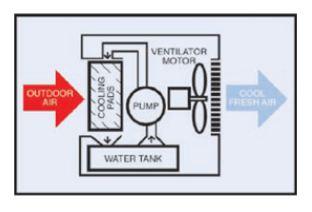Nyboy
Garden Master
- Joined
- Oct 2, 2010
- Messages
- 21,365
- Reaction score
- 16,249
- Points
- 437
Whats a swamp cooler?


As the rain falls onto a tin roof and starts it's journey toward the roof bottom edge, through the process of erosion , it will first slowly dissolve the coating then the steel of the roofing causing rust. These dissolved molecules will then fall to the ground and then carried wherever the water takes them to.GardenGeisha said:It is a tin roof...